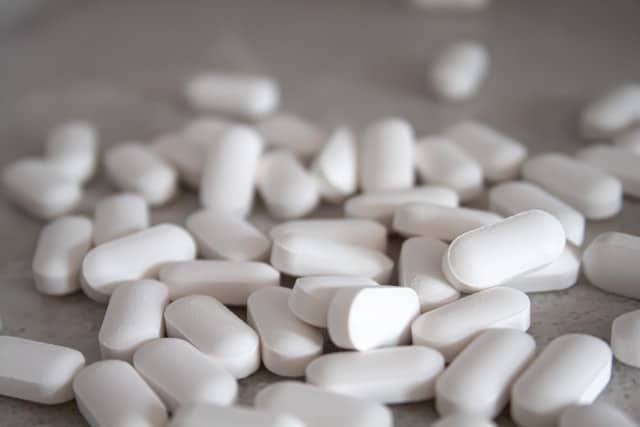How Is Nanotechnology Impacting Drug Delivery Systems in the UK?

Nanotechnology, a field that manipulates matter at the nanometer scale, is revolutionizing many aspects of our lives. One area that has seen a significant transformation is the healthcare industry, where nanotechnology’s potential is being harnessed to improve drug delivery systems. This discipline focuses on delivering therapeutic molecules to targeted cells, with the ultimate goal of enhancing the efficacy of treatment while minimizing side effects.
Nanoparticles and Their Role in Drug Delivery
Nanoparticles (NPs) are at the heart of nanotechnology-based drug delivery systems. These tiny particles, typically less than 100 nanometers in size, have unique properties that make them ideal for drug delivery. The nanoscale size allows them to navigate through the body’s various physiological barriers, increasing their potential to reach targeted cells.
A lire en complément : What’s the Latest in Sustainable Urban Mobility Planning in the UK?
A prime example of this is the use of nanoparticles in cancer treatment. Traditionally, cancer drugs are known for their harsh side effects due to their inability to distinguish between cancerous and healthy cells. However, NPs, with their small size and the ability to be surface-modified for specific cell recognition, can deliver these drugs directly to the cancer cells. Through this, the treatment becomes more effective, and the impact on the patient’s healthy cells is minimized.
Nanoparticle-Based Drug Delivery Systems
In the UK, research and development in nanotechnology have led to the creation of various nanoparticle-based drug delivery systems. These systems use different types of NPs, such as liposomes, polymeric nanoparticles, and metallic nanoparticles, each with its unique properties and potential applications.
Dans le meme genre : What Are the Benefits of Multi-Sensory Learning Environments in Special Education?
For instance, liposomes, which are lipid-based nanoparticles, have been used to deliver drugs that have poor solubility. These particles can encapsulate the drug molecule, enhancing its stability and solubility, and thus, its bioavailability. On the other hand, polymeric nanoparticles can be designed to release the drug in a controlled manner over an extended period, improving the effectiveness of the treatment.
The Potential of Nanoparticles in Crossing Physiological Barriers
The small size of NPs gives them the ability to cross physiological barriers that conventional drug delivery systems can’t. This opens up possibilities for the treatment of diseases that were previously challenging to treat due to these barriers.
For example, the blood-brain barrier (BBB) is a protective barrier that prevents potentially harmful substances in the bloodstream from reaching the brain. However, this barrier also prevents most drugs from reaching the brain, making the treatment of central nervous system diseases challenging. Nanoparticles, with their small size and ability to be surface-modified, have the potential to cross the BBB and deliver drugs directly to the brain cells, providing a promising approach for the treatment of neurological diseases.
Challenges and Future Prospects of Nanoparticle-Based Drug Delivery Systems
While the prospects of nanoparticle-based drug delivery systems are exciting, several challenges need to be addressed. These include the potential toxicity of nanoparticles, the difficulty in controlling the release of the drug, and the potential for the immune system to recognize and eliminate the nanoparticles before they can deliver the drug.
However, ongoing research in the UK is aimed at overcoming these challenges. For instance, researchers are working on developing biodegradable nanoparticles that can be safely eliminated by the body after delivering the drug. Also, advances in surface engineering techniques are enabling the design of nanoparticles that can evade the immune system and deliver the drug more efficiently.
In conclusion, nanotechnology is bringing a paradigm shift in drug delivery systems in the UK. The use of nanoparticles offers significant benefits, such as targeted delivery and the ability to cross physiological barriers, which can enhance the effectiveness of treatments. While challenges exist, continued advances in this field promise to bring highly effective and safer drug delivery systems, ultimately improving the quality of healthcare.
The Role of Nanotechnology in Delivering Gene Therapy and Tissue Engineering
In addition to cancer treatment, nanotechnology is also revolutionizing other areas of healthcare, such as gene therapy and tissue engineering. In gene therapy, the objective is to deliver genetic material into cells to correct genetic disorders. However, the delivery of this genetic material is fraught with challenges, including degradation before reaching the target cells and possible adverse immune responses. Nanoparticles, owing to their small size and the potential for surface modification, provide a novel solution to these problems.
In the UK, researchers have been using lipid nanoparticles to deliver genetic material into cells. Lipid nanoparticles can form a protective layer around the genetic material, preventing degradation, and can also be designed to be recognized and taken up by the target cells. This type of delivery system is already being used in mRNA vaccines, and studies are ongoing to expand its application to gene therapy.
Meanwhile, in the field of tissue engineering, nanoparticles are being used to deliver growth factors and other bioactive molecules to promote the regeneration of damaged tissues. For example, chitosan nanoparticles, which are biocompatible and biodegradable, have been used to deliver growth factors for bone regeneration. These nanoparticles can protect the growth factors from premature degradation, and their controlled release properties can ensure a sustained release over time, enhancing the effectiveness of the treatment.
Nanotechnology-Enabled Drug Delivery: The Way Forward
Despite the challenges, the future of nanotechnology-enabled drug delivery technologies looks bright. With continuous advancements in nanotechnology and a deeper understanding of disease mechanisms at the molecular level, even more, targeted and efficient drug delivery systems can be expected.
The potential of nanoparticles to cross physiological barriers opens up new avenues for the treatment of diseases that were previously difficult to treat. For instance, nanoparticles could be key in advancing the treatment of neurological diseases by crossing the blood-brain barrier. Nanoparticles also have the potential to improve the delivery of gene therapy, paving the way for more effective treatments for genetic disorders.
Moreover, the potential of nanotechnology in tissue engineering and regenerative medicine is immense. By delivering growth factors and other bioactive molecules at the site of tissue damage, nanoparticles can significantly enhance the body’s natural healing process.
In conclusion, it is evident that nanotechnology is revolutionizing drug delivery in the UK and globally. Researchers are optimistic that with ongoing advancements, nanoparticle-based drug delivery systems will continue to evolve, providing safer and more effective treatments for a wide range of diseases. The ultimate goal is to improve patient outcomes and enhance the quality of healthcare, making nanotechnology a crucial tool in achieving this objective.
